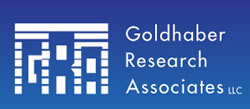The Goldhaber Warnings Report - Samples of Effective Product Warnings
By: Gerald M. Goldhaber, Ph.D.
President & CEO GRA LLC
Office: (212)379-6661
Cell: (917)279-2303
Email Dr. Gerald Goldhaber
View
Profile on
Experts.com.
View PDF version of the Goldhaber Warnings Report - Vol. 1
In the last issue of this newsletter, I listed the major components found in most warnings along with making several suggestions that should help improve a warning's conspicuousness and make it more likely to gain the attention of the product's user at the time of use. The following is an example of a warning that I have designed and tested for use in swimming pools, either above or in ground, which has shallow water as a potential hazardous condition for diving.
Note that the warning uses bold print with uppercase letters for the signal word "DANGER." The font size of the letters is sufficient to allow viewing of this warning from several feet away from the pool and, most importantly, prior to an individual's approach to a potentially hazardous condition (i.e., diving into shallow water). There are contrasting colors used for the signal word (red, white and black), which are consistent with those recommended by the latest warning standards of the American National Standards Institute (see ANSI Z535).
Further, there is a pictogram, also with contrasting colors, that may be helpful for those who cannot read English or for those who might need a pictorial reinforcement to the verbal language in the warning. It should be noted that I tested this pictogram on an audience of several hundred swimmers and over 90% of them understood its meaning, which is consistent with the testing standard recommended by ANSI for testing the effectiveness of pictograms. Additionally, there is ample white space present in this warning to enhance its readability as well as its contents' conspicuousness.
This warning also uses a signal word "WARNING" in bold, uppercase letters with contrasting colors (green and white) and is preceded by a well-known, previously tested icon (the Society of Automotive Engineers' Safety Alert Symbol) to improve the warning's conspicuousness. For larger bottles (2 liters), this warning is actually repeated in two prominent locations, which increases the likelihood of drawing consumers' attention at the time of use.
The next example is a warning I designed for a soft drink manufacturer to alert consumers of the pressurized cap hazardous condition, which may cause injury to people when a bottle is opened.
Now that we have discussed and illustrated some techniques that may improve a warning's conspicuousness, future issues of this newsletter will address some of the most important factors, outside of a warning's design, that may influence a warning's effectiveness. Feel free to pass this newsletter on to any of your friends and colleagues.
Dr. Gerald M. Goldhaber, the president of Goldhaber Research Associates, LLC, is a nationally recognized expert in the fields of political polling and warning label research. His clients include Fortune 500 companies, as well as educational and governmental organizations. He has conducted hundreds of surveys, including political polls for candidates running for U.S Congress, Senate, and President. Dr. Goldhaber also served as a consultant to President Reagan's Private Sector Survey for Cost Control.
Dr. Goldhaber has written and edited 10 books and is a frequent international lecturer on the topic of communication. He writes numerous articles on a variety of issues for publication in journals and newspapers across the country, and has served as a political analyst for numerous radio and television shows. He has been selected as a member of Who's Who in America and Who's Who in the World.
See Dr. Gerald Goldhaber's Profile on Experts.com.
©Copyright - All Rights Reserved
DO NOT REPRODUCE WITHOUT WRITTEN PERMISSION BY AUTHOR.









